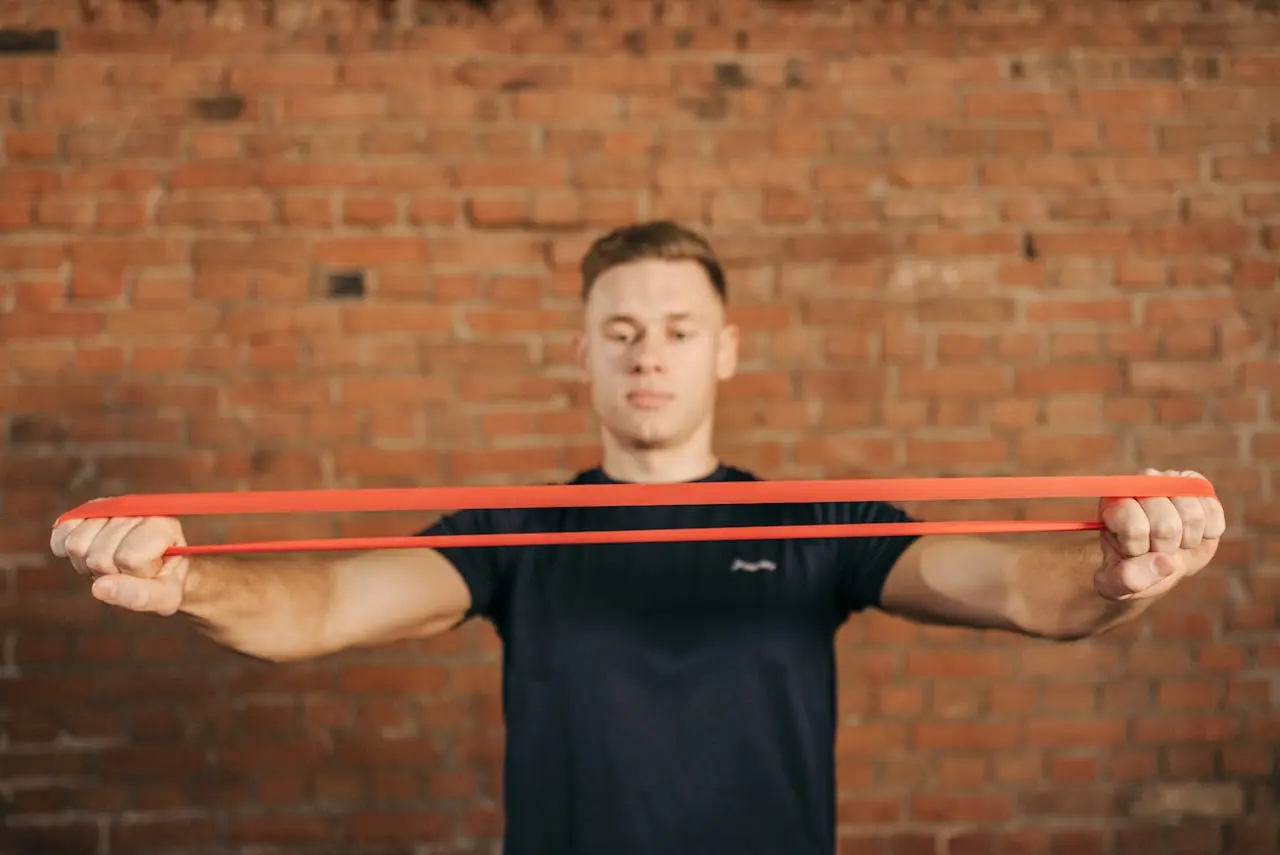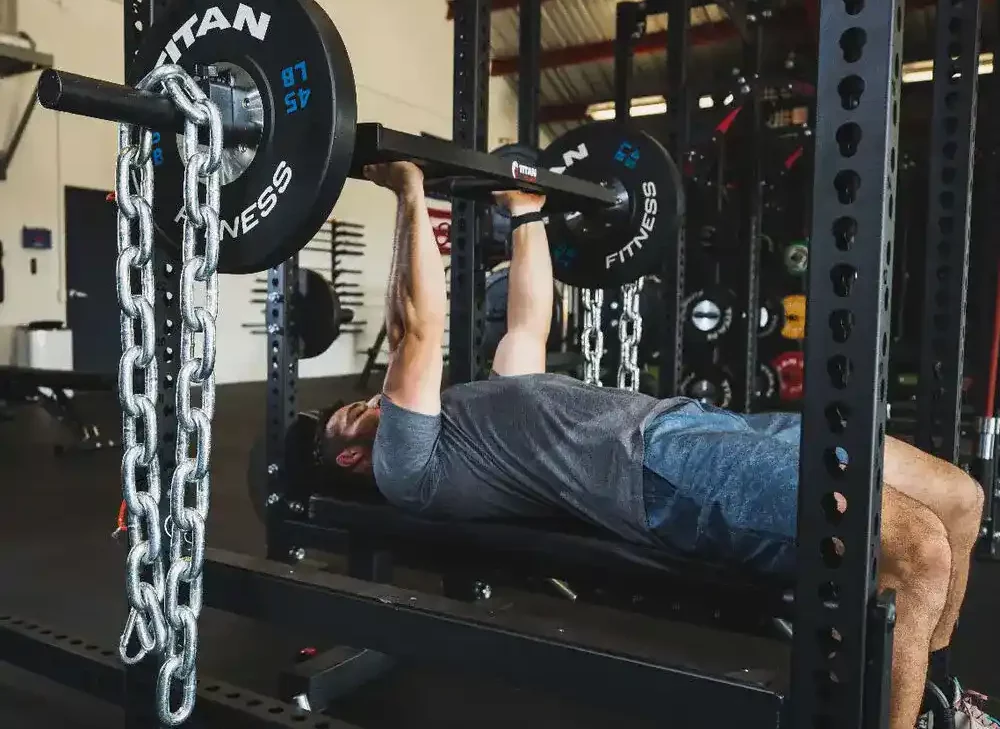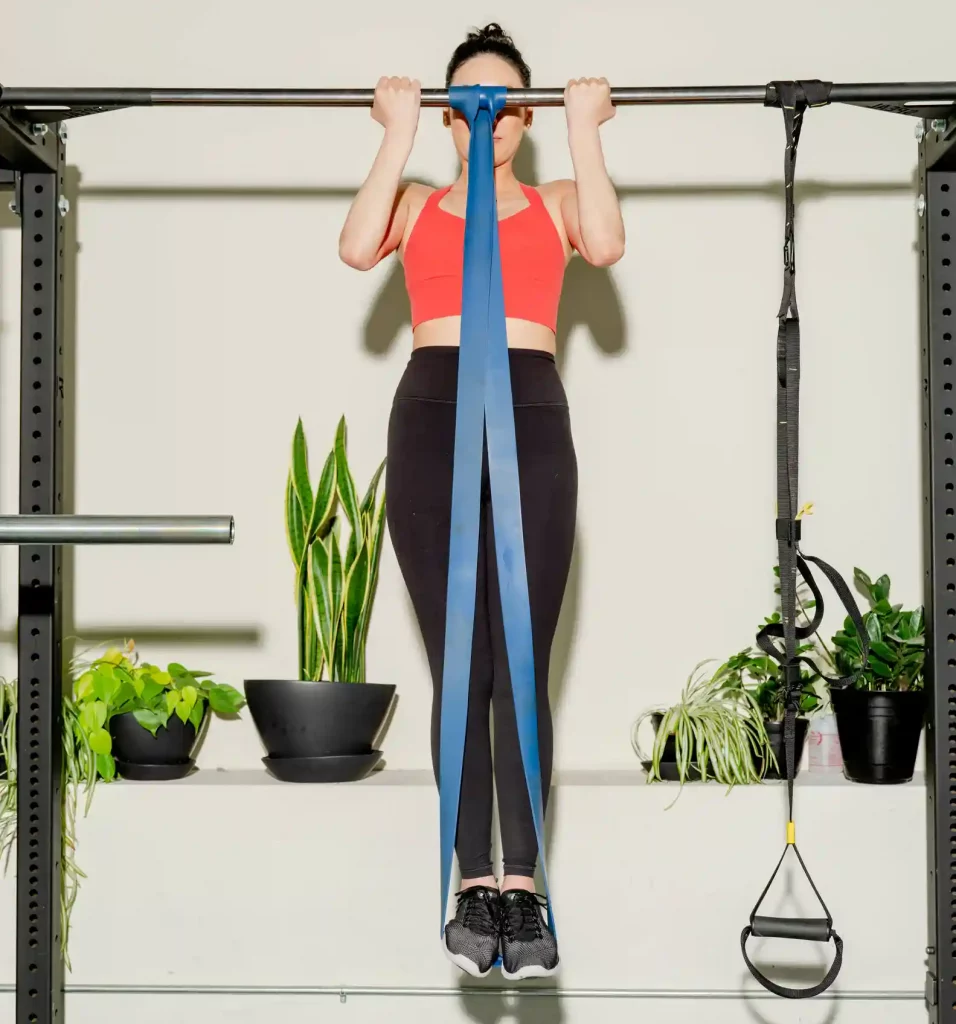
Table of Contents
What is Variable Resitance Training?
Variable Resistance Training (VRT) is a method of strength training that involves altering the resistance throughout the range of motion in an exercise. Unlike traditional weightlifting, where the resistance remains constant, variable resistance training uses specialized equipment or techniques to increase or decrease the resistance at different points in the movement. This approach aims to optimize muscle activation and promote greater strength gains by matching the resistance to the muscle’s force-generating capabilities at different joint angles.
- Improved muscle activation: By matching resistance to the muscle’s strength curve, VRT can lead to better muscle activation and more significant strength gains.
- Reduced joint stress: VRT can decrease the load on joints at vulnerable positions and increase load at more stable positions, potentially reducing joint stress and injury risk.
- Enhanced power development: VRT can help improve explosive power by overloading the muscles at their strongest points in the range of motion.
- Greater muscle fiber recruitment: The varying resistance in VRT can lead to increased recruitment of muscle fibers, promoting muscle growth and strength improvements.
By incorporating variable resistance into a training routine, individuals can potentially stimulate greater muscle growth, improve strength, and enhance performance in specific movements or sports. It can also help reduce the risk of overloading certain joints or muscles during exercises by providing a more natural resistance profile.
Who Would Benefit from Variable Resistance Training?
- Athletes: VRT can help athletes improve their overall strength, power, and muscular endurance by targeting muscle groups at different angles and optimizing muscle fiber recruitment. This can translate to better performance in sports and competitions.
- Bodybuilders: Bodybuilders can use variable resistance training to stimulate muscle growth and break through plateaus. By providing greater resistance at the strongest points of the muscle contraction, VRT can lead to more muscle activation and hypertrophy.
- Powerlifters and Weightlifters: Variable resistance training can complement traditional strength training methods by addressing weaknesses and improving force production throughout the range of motion. This can translate to better performance in powerlifting and weightlifting competitions.
- Experienced lifters: For those who have reached a plateau in their strength training progress, VRT can provide a new stimulus to challenge their muscles and promote further growth.
- Individuals with joint pain or injuries: VRT can be an effective tool for those dealing with joint pain or injuries, such as osteoarthritis, as it allows them to adjust resistance levels throughout the range of motion, reducing stress on vulnerable areas.
- Older Adults: Variable resistance training can help older adults maintain or increase muscle mass, strength, and functional capacity, which are essential for maintaining independence and preventing age-related declines in physical function.
- People with muscle imbalances: VRT can help address muscle imbalances by providing a more tailored approach to resistance, focusing on specific areas that may require additional attention.
- Rehabilitation patients: VRT can be beneficial for individuals in physical therapy or rehabilitation programs, who are recovering from injuries or surgeries. VRT allows for controlled loading of injured or weakened muscles and joints, aiding in the recovery process and preventing further injury.
In summary, variable resistance training can be a valuable addition to workout routines for various individuals, providing a customized approach to strength training that can help overcome plateaus, address muscle imbalances, and optimize overall performance.
Examples of Effective Variable Resistance Training Programs
There are several effective variable resistance training programs that can be tailored to individual goals, fitness levels, and equipment availability. Here are a few examples:
VRT Exercises
The following are some examples of VRT you can do by yourself in your home or at the gym:
- Banded Squats: Attach an elastic band to a squat rack or other sturdy object, then loop the band around the barbell or your upper back, depending on the desired level of resistance. As you descend into the squat, the band’s tension increases, providing more resistance at the bottom of the movement.
- Chain Bench Press: Attach chains to the ends of a barbell and perform a traditional bench press. As you lower the bar, the chains pile up on the floor, reducing the load. During the pressing phase, the chains lift off the floor, increasing the resistance as you reach the top of the movement.
- Variable Resistance Training Machines: Some fitness centers have specialized VRT machines that use cams, pulleys, or lever arms to adjust resistance throughout the exercise range of motion. Examples include the Nautilus or Hammer Strength machines.
- Resistance Band Rows: Secure a resistance band to a sturdy object at shoulder height, then hold the ends of the band and perform a rowing motion. As you stretch the band, the resistance increases, providing more tension during the most challenging part of the movement.
- Banded Push-ups: Wrap a resistance band around your upper back and grip the ends with your hands as you perform a push-up. The band’s tension increases as you press up, providing additional resistance during the concentric phase of the exercise.
- Cable Machine Workouts: Using a cable machine, perform exercises like tricep pushdowns, cable crossovers, or seated rows. Adjust the pulley height and weight stack to customize the resistance throughout the movement.
- Banded Pull-ups: Secure a resistance band around the pull-up bar and loop it under your feet or knees. As you perform pull-ups, the band provides more assistance when you’re at the bottom of the movement and reduces assistance as you approach the top.
- Chain Lunges: Attach chains to a barbell or weight plate, and perform lunges as the chains add variable resistance to the movement.
- Banded Deadlifts: Similar to banded squats, attach an elastic band to the barbell or your upper body while performing deadlifts, providing more resistance as you lock out at the top of the lift.


Structured VRT Programs
The following are some structured VRT programs you can try following or subscribing to:
- Westside Barbell Method: This program, popular among powerlifters, incorporates dynamic effort and max effort days. On dynamic effort days, lifters use submaximal weights with bands or chains to develop speed and explosiveness. On max effort days, they perform heavy lifts with varied resistance to target specific weaknesses.
- Triphasic Training: Developed by strength coach Cal Dietz, Triphasic Training emphasizes eccentric, isometric, and concentric phases of movement. It incorporates variable resistance techniques such as bands and chains to maximize strength gains and athletic performance.
- Linear Periodization with Bands or Chains: Traditional linear periodization involves gradually increasing intensity and decreasing volume over several weeks. By incorporating bands or chains into this model, you can add variable resistance to linearly progressing lifts, such as squats and bench presses, to further challenge muscles throughout the training cycle.
- Conjugate Method: Similar to the Westside Barbell Method, the Conjugate Method rotates through various exercises and intensity levels to continuously challenge the body and avoid plateaus. It often includes exercises with bands or chains to accommodate different strength curves and develop power and explosiveness.
- Oscillating Periodization: This approach alternates between heavy, moderate, and light training days within each microcycle (usually one week). Variable resistance, such as bands or chains, can be incorporated into each training day to provide different stimuli and promote adaptation.
- DUP (Daily Undulating Periodization) with Bands or Chains: DUP involves varying intensity and volume within each week, typically with higher frequency training. By adding bands or chains to DUP-style workouts, you can introduce variable resistance and further enhance muscle activation and adaptation.
When designing a variable resistance training program, it’s essential to consider individual goals, training experience, and equipment availability. Working with a qualified strength coach or personal trainer can help customize a program to maximize effectiveness and safety. Additionally, always prioritize proper form, progression, and recovery to achieve optimal results and minimize the risk of injury.
How Can I Combine Resistance Bands with Free Weights?
- Band-Resisted Exercises: Attach resistance bands to the barbell or dumbbells to provide additional resistance during exercises like squats, deadlifts, bench presses, and rows. The bands will increase the load as you move through the range of motion, providing a more significant challenge at the lockout or peak contraction points.
- Band-Assisted Exercises: Resistance bands can be helpful for exercises where you need a bit of assistance. For example, loop a band around a pull-up bar and place your knees or feet in the band to provide some support while performing pull-ups. This can help you develop strength and proper form as you progress towards unassisted pull-ups.
- Band-Assisted Free Weights Supersets: Combine a free weight exercise with a band exercise targeting the same muscle group in a superset. For instance, perform a set of bicep curls with dumbbells, then immediately follow it with a set of resistance band bicep curls. This will challenge your muscles from different angles and provide a unique training stimulus.
- Unilateral Exercises: Anchor a resistance band to a sturdy object and use it to provide resistance for unilateral exercises like single-leg squats, single-arm rows, or single-arm chest presses. This can help improve balance and stability while working each side independently.
- core exercises: Resistance bands are great for core exercises like planks, Russian twists, and ab rollouts. You can anchor the band to a stationary object or loop it around your body to create tension and increase the challenge.
- Band-Loaded Exercises: Another option is to use resistance bands to increase the resistance of certain exercises beyond the limitations of free weights alone. For example, you can loop a resistance band around your shoulders and hold onto free weights while performing shoulder presses. The band adds extra resistance at the top of the movement, where the shoulders are strongest, providing a greater challenge to the muscles.
- Band-Resisted Cardio Exercises: Incorporate resistance bands into cardio exercises such as jogging or sprinting by wearing them around your ankles or thighs. The bands add resistance to leg movements, increasing the intensity of the workout and engaging more muscles.
- Band-Enhanced Stretching: Use resistance bands to deepen stretches and improve flexibility during cool-downs or recovery sessions. For example, you can loop a resistance band around your foot and gently pull on it to stretch your hamstring while lying on your back.
- Combining Bands and Weights for Circuit Training: Create circuit-style workouts that alternate between resistance band exercises and free weight exercises to target different muscle groups and keep your heart rate elevated throughout the session.
What Are Common Mental Blocks Associated with Resistance Training?
- Fear of Failure or Injury: Many beginners may worry about hurting themselves when lifting weights, which can cause hesitation or avoidance of certain exercises.
- Perfectionism: Striving for perfect form or always pushing for personal records can lead to frustration and demotivation if progress is slower than expected.
- Comparison with others: Seeing the progress or strength of other gym-goers can sometimes make individuals feel inadequate or discouraged. It’s important to remember that everyone has different starting points and progress at their own pace.
- Feeling intimidated: Some people may feel overwhelmed or anxious in a gym setting, especially if they are unfamiliar with the equipment or exercises.
- Self-doubt: Doubting one’s ability to perform exercises or make progress can be a significant mental hurdle, often leading to a lack of motivation or consistency in training.
- Plateaus and Lack of Progress: Stagnation in progress or hitting a plateau can be mentally frustrating and demotivating. It may lead to doubts about the effectiveness of the training program or one’s own abilities.
- Perfectionism**: Striving for perfection in form or progress can be mentally exhausting and unrealistic. It’s important to acknowledge that progress is rarely linear and setbacks are normal in any training journey.
- Negative body image: Individuals with negative body image issues may struggle with resistance training, fearing that it will make them “bulky” or “unattractive.”
- Impatience: Many people expect to see immediate results from their training efforts and become discouraged when progress is slow. Building strength and muscle takes time, patience, and consistency.
- Time constraints: Feeling like there’s not enough time to dedicate to resistance training can lead people to deprioritize it or skip workouts altogether.
- Lack of knowledge: Not knowing how to properly perform exercises or design an effective program can make resistance training feel daunting and unapproachable.
- Fear of Judgement: Feeling self-conscious or worrying about being judged by others in the gym can hinder performance and confidence. Remember that most people are focused on their own workouts and aren’t paying attention to others.
- Past failures: Previous unsuccessful attempts at resistance training or reaching specific fitness goals can lead to feelings of discouragement and a belief that success is unattainable.
- Negative Self-Talk: Negative self-talk, such as “I can’t do this” or “I’m not strong enough,” can sabotage motivation and confidence. Learning to replace negative thoughts with positive affirmations can help overcome mental blocks.
- Overthinking Technique: While proper form is important for safety and effectiveness, obsessing over perfect technique can create mental barriers and inhibit progress. Strive for good form but don’t let it become a source of anxiety.
- Lack of Focus or Concentration: Distractions or lack of focus during workouts can prevent individuals from pushing themselves to their full potential. It’s important to stay present and focused on the task at hand.
Mix Some Variety in Your Workouts with VRT
I hope you found this information helpful. Check out my other related posts such as why goas setting is important to overall fitness and the golden rules for weight training for beginners. We also recorded a related podcast on strength training and injuries and prevention.



